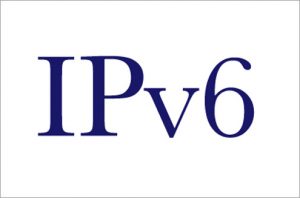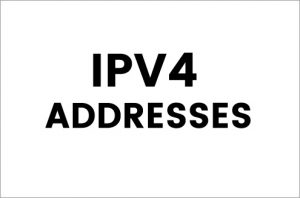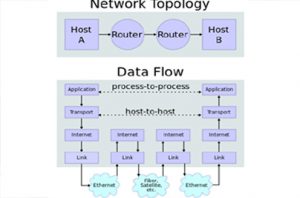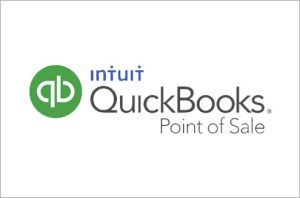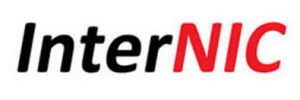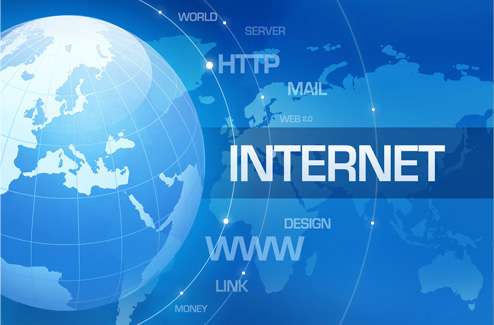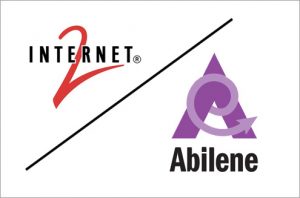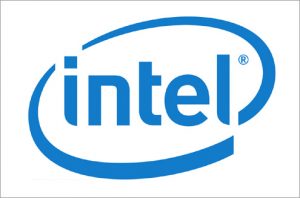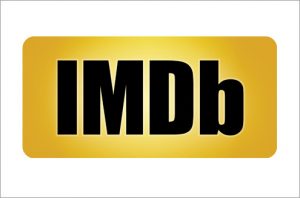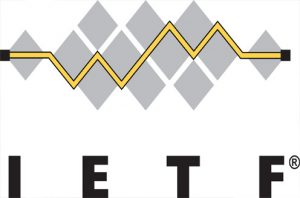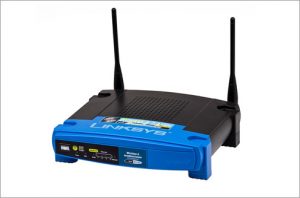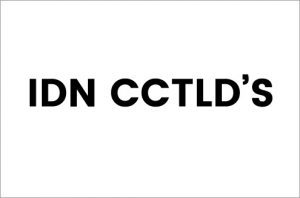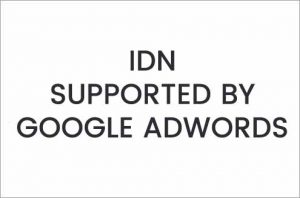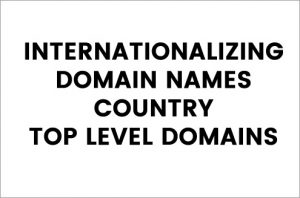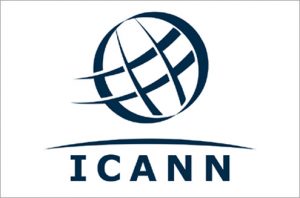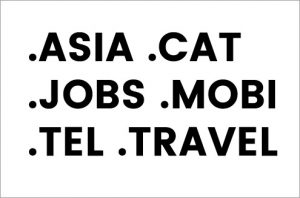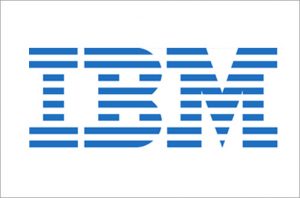The following companies have been accredited by ICANN to act as registrars in one or more generic top-level domains (gTLDs). The RAA (Registrar Accreditation Agreement) version indicated after each registrar name designates which contract the registrar has signed with ICANN.
The 2013 RAA is the most current contract governing the registrar relationship with ICANN. The 2013 RAA provides enhanced protections for registrants and an increased level of accountability for registrars, including but not limited to added registrar posting requirements, added compliance enforcement tools, and increased accountability to third parties. Prospective registrants may want to take this fact into account when selecting a registrar for their gTLD name(s).
Registrars who are covered by the 2009 RAA are obligated to follow many provisions that safeguard registrants, but they will not be able to offer as many generic top level domains in the future.
The RAA version is not an indication of how long the registrar has been ICANN accredited.
! #1 Host Australia, Inc. United States
! #1 Host Canada, Inc. United States
! #1 Host China, Inc. United States
! #1 Host Germany, Inc. United States
! #1 Host Israel, Inc. Hong Kong
! #1 Host Japan, Inc. United States
! #1 Host Korea, Inc. United States
!#No1Registrar, LLC Israel
#1 Internet Services International, Inc. dba 1ISI United States
$$$ Private Label Internet Service Kiosk, Inc. (dba “PLISK.com”) United States
007Names, Inc. United States
0101 Internet, Inc. Hong Kong
1 Domain Source Ltd. dba Domain One Source, Inc. United States
1&1 Internet SE Germany
101domain Discovery Limited Ireland
101domain GRS Limited Ireland
10dencehispahard, S.L. Spain
123-Reg Limited United Kingdom
123domainrenewals, LLC United States
1800-website, LLC United States
1API GmbH Germany
1st-for-domain-names, LLC United States
2030138 Ontario Inc. dba NamesBeyond.com and dba GoodLuckDomain.com United States
22net, Inc. China
24x7domains, LLC United States
35 Technology Co., Ltd. China
4X France
995discountdomains, LLC United States
Aahwed, Inc. United States
AB Name ISP Sweden
AB RIKTAD Sweden
Abansys & Hostytec, S.L. Spain
Aboss Technology Limited China
Above.com Pty Ltd. Australia
Abraham Lincoln, LLC United States
Abu-Ghazaleh Intellectual Property dba TAGIdomains.com Jordan
AccentDomains LLC United States
Acens Technologies, S.L.U. Spain
Achilles 888, LLC United States
AcquiredNames LLC United States
Active Registrar, Inc. Singapore
Ad Valorem Domains, LLC United States
Address Creation, LLC United States
Addressontheweb, LLC United States
Adomainofyourown.com LLC United States
Advanced Internet Technologies, Inc. (AIT) United States
Aerotek Bilisim Sanayi ve Ticaret AS Turkey
Aetrion LLC dba DNSimple United States
AFRIREGISTER S.A. Burundi
Afterdark Domains, Incorporated United States
Agrinoon Inc United States
Aim High!, Inc. United States
Akamai Technologies, Inc. United States
Alantron Bilisim Ltd Sti. Turkey
Alethia Domains, LLC United States
Alexander the Great, LLC United States
Alfena, LLC United States
Alibaba Cloud Computing Ltd. d/b/a HiChina (www.net.cn) Singapore
Alibrother Technology Limited China
Alice’s Registry, Inc. United States
All Domains LLC United States
Allaccessdomains, LLC United States
Alldomains, LLC United States
Allearthdomains.com LLC United States
AllGlobalNames, S.A. dba Cyberegistro.com Spain
Allworldnames.com LLC United States
Alpine Domains Inc. Canada
Alpnames Limited Gibraltar
Amazon Registrar, Inc. United States
Anessia Inc. United States
Annam, LLC United States
Annulet LLC United States
Anytime Sites, Inc. India
Apollo 888, LLC United States
April Sea Information Technology Company Limited Viet Nam
Aquarius Domains, LLC United States
Arab Internet Names, Incorporated United States
Arcanes Technologies Morocco
Arctic Names, Inc. Canada
Ares 888, LLC United States
Aristotle 888, LLC United States
Arsys Internet, S.L. dba NICLINE.COM Spain
Arthur Pendragon, LLC United States
Aruba SpA Italy
Ascio Technologies, Inc. Danmark – Filial af Ascio technologies, Inc. USA Denmark
AsiaDomains, Incorporated United States
AsiaRegister, Inc. Hong Kong
Astutium Limited United Kingdom
Atak Domain Hosting Internet ve Bilgi Teknolojileri Limited Sirketi d/b/a Atak Teknoloji Turkey
ATI Tunisia
AtlanticDomains, LLC United States
AtlanticFriendNames.com LLC United States
Atomicdomainnames.com LLC United States
Attila the Hun, LLC United States
Austriadomains, LLC United States
Austriandomains, LLC United States
Authentic Web Inc. Canada
Automattic Inc. United States
AvidDomain LLC United States
AXC BV Netherlands
Azdomainz, LLC United States
Azprivatez, LLC United States
Backslap Domains, Inc. United States
Backstop Names LLC United States
Baracuda Domains, LLC United States
Baronofdomains.com LLC United States
BatDomains.com Ltd. Canada
BB-Online UK Limited United Kingdom
BDL Systemes SAS dba ProDomaines France
Beartrapdomains.com LLC United States
Beijing Brandma International Networking Technology Ltd. China
Beijing Guoxu Network Technology Co., Ltd. China
Beijing HuaRui Wireless Technology Co., Ltd China
Beijing Innovative Linkage Technology Ltd. dba dns.com.cn China
Beijing Lanhai Jiye Technology Co.,Ltd China
Beijing Midwest Taian Technology Services Ltd. China
Beijing RITT – Net Technology Development Co., Ltd China
Beijing Sanfront Information Technology Co., Ltd China
Beijing Tong Guan Xin Tian Technology Ltd (Novaltel) China
Beijing Wangzun Technology Co., Ltd. China
Beijing ZhongWan Network Technology Co Ltd China
Beijing Zhuoyue Shengming Technologies Company Ltd. China
Beijing Zihai Technology Co., Ltd China
Belmontdomains.com LLC United States
Benjamin Franklin 888, LLC United States
Best Drop Names LLC United States
Betterthanaveragedomains.com LLC United States
Bidfordomainnames, LLC United States
Big Dipper Domains, LLC United States
Big Domain Shop, Inc. India
Big House Services, Inc. United States
Biglizarddomains.com LLC United States
BigRock Solutions Ltd. India
Billy the Kid, LLC United States
Binero AB Sweden
Bizcn.com, Inc. China
Blacknight Internet Solutions Ltd. Ireland
BlastDomains LLC United States
Blisternet, Incorporated United States
BlockHost LLC United States
Blue Angel Domains LLC United States
Blue Fractal, Inc. India
Blue Hi Interconnect (Beijing) Technology Limited Company China
Blue Razor Domains, LLC United States
Bombora Technologies Pty Ltd. Australia
Bonam Fortunam Domains, LLC United States
Bonzai Domains, LLC United States
BoteroSolutions.com S.A. United States
Bottle Domains, Inc. Australia
Bounce Pass Domains LLC United States
BR domain Inc. dba namegear.co Japan
Brandma.co Limited Hong Kong
BrandNames.com SARL Switzerland
BRANDON GRAY INTERNET SERVICES INC. (dba “NameJuice.com”) Canada
BraveNames Inc. United States
Brennercom Limited United States
BRS, LLC United States
Buddha, LLC United States
BullRunDomains.com LLC United States
Burnsidedomains.com LLC United States
camPoint AG Germany
Capitaldomains, LLC United States
Catalog.com United States
Catch Deleting Names LLC United States
Catch Domains LLC United States
CCI REG S.A. Panama
Center of Ukrainian Internet Names (UKRNAMES) Ukraine
Century Oriental International Co., Ltd. Hong Kong
Charlemagne 888, LLC United States
Charles Darwin, LLC United States
Chengdu Fly-Digital Technology Co., Ltd. China
Chengdu West Dimension Digital Technology Co., Ltd. China
China Springboard, Inc. China
ChinaNet Technology (SuZhou) CO., LTD China
Chinesedomains, LLC United States
Chipshot Domains LLC United States
ChocolateChipDomains, LLC United States
Chocolatecovereddomains,LLC United States
Circle of Domains LLC United States
Claimeddomains, LLC United States
Click Registrar, Inc. d/b/a publicdomainregistry.com India
Cloud Bamboo, LLC China
Cloud Beauty, LLC China
Cloud Boom, LLC China
Cloud City, LLC China
Cloud Diamond, LLC China
Cloud Orchid, LLC China
Cloud Plum, LLC China
Cloud Seed, LLC China
Cloud Shark, LLC China
Cloud Sun, LLC China
Cloud Super, LLC China
Cloud System, LLC China
CloudBreakDomains, LLC United States
CloudFlare, Inc. United States
CloudNineDomain, LLC United States
Cocosislandsdomains, LLC United States
Columbiadomains, LLC United States
Columbianames.com LLC United States
ComfyDomains LLC United States
Commerce Island, Inc. India
CommuniGal Communication Ltd. Israel
Compuglobalhypermega.com LLC United States
Confucius, LLC United States
Constantine the Great, LLC United States
Cool Breeze Domains, LLC United States
Cool Ocean, Inc. India
Cool River Names, LLC United States
Copper Domain Names LLC United States
Coral Reef Domains LLC United States
COREhub, S.R.L. Spain
Corporation Service Company (DBS) INC. United States
CORPORATION SERVICE COMPANY (UK) LIMITED United States
Cosmotown, Inc. Korea (South)
CPS-Datensysteme GmbH Germany
Crazy Domains FZ-LLC United Arab Emirates
Crisp Names, Inc. India
Cronon AG Germany
Crystal Coal, Inc. India
CSC Corporate Domains, Inc. United States
CSL Computer Service Langenbach GmbH d/b/a joker.com Germany
CT CORPORATION SYSTEM United States
Curious Net, Inc. India
Curveball Domains LLC United States
- Jogjacamp Indonesia
- Rumahweb Indonesia Indonesia
CyanDomains, Inc. Hong Kong
Cyrus the Great, LLC United States
Dagnabit, Incorporated United States
Dainam, LLC United States
Dalai Lama, LLC United States
DanCue Inc. United States
DanDomain A/S Denmark
Danesco Trading Ltd. Cyprus
Dattatec.com SRL Argentina
Decentdomains, LLC United States
Deep Dive Domains, LLC United States
Deep Sea Domains LLC United States
Deep Water Domains LLC United States
Deleting Name Zone LLC United States
Deluxe Small Business Sales, Inc. d/b/a Aplus.net United States
Demys Limited United Kingdom
Department-of-domains, LLC United States
Deschutesdomains.com LLC United States
Desert Devil, Inc. India
Desert Sand Domains, LLC United States
Deutchdomains, LLC United States
Deutsche Telekom AG Germany
DevilDogDomains.com, LLC United States
Diamatrix C.C. South Africa
Diggitydot, LLC United States
Dinahosting s.l. Spain
Discount Domains Ltd. United Kingdom
Discountdomainservices, LLC United States
DNC Holdings, Inc. United States
DNS:NET Internet Service GmbH Germany
DNSPod, Inc. China
Domain Ala Carte, LLC United States
Domain Band, Inc. India
Domain Bazaar LLC United States
Domain Central Australia Pty Ltd. Australia
Domain Collage, LLC United States
Domain Esta Aqui, LLC United States
Domain Gold Zone LLC United States
Domain Grabber LLC United States
Domain Guardians, Inc. United States
Domain Jamboree, LLC United States
Domain Landing Zone LLC United States
Domain Lifestyle, LLC United States
Domain Locale, LLC United States
Domain Mantra, Inc. India
Domain Monkeys, LLC United States
DOMAIN NAME NETWORK PTY LTD Australia
Domain Name Origin, LLC United States
Domain Name Root, LLC United States
Domain Name Services (Pty) Ltd South Africa
Domain Original, LLC United States
Domain Pickup LLC United States
Domain Pro, LLC United States
Domain Registration Services, Inc. dba dotEarth.com United States
Domain Research, LLC United States
Domain Rouge, Inc. United States
Domain Secure LLC United States
Domain Source LLC United States
Domain Stopover LLC United States
Domain Success LLC United States
Domain The Net Technologies Ltd. Israel
DOMAIN TRAIN, INC. United States
Domain Vault Limited Canada
Domain-A-Go-Go, LLC United States
Domain-It!, Inc. United States
Domain.com, LLC United States
DomainAdministration.com, LLC United States
DomainAhead LLC United States
DomainAllies.com, Inc. United States
Domainamania.com LLC United States
Domainarmada.com LLC United States
Domainbox Limited United Kingdom
Domainbulkregistration, LLC United States
Domainbusinessnames, LLC United States
Domaincamping, LLC United States
Domaincapitan.com LLC United States
Domaincatcher LLC United States
Domaincircle LLC United States
Domainclip Domains, Inc. Canada
Domainclub.com, LLC United States
Domaincomesaround.com LLC United States
DomainContext, Inc. United States
DomainCraze LLC United States
DomainCreek LLC United States
DomainCritics LLC United States
DomainDelights LLC United States
Domaindrop LLC United States
Domainducks, LLC United States
Domainer Names LLC United States
DomainExtreme LLC United States
domainfactory GmbH Germany
DomainFalcon LLC United States
Domaingazelle.com LLC United States
DomainGetter LLC United States
Domainhawks.net LLC United States
DomainHood LLC United States
Domainhostingweb, LLC United States
Domainhysteria.com LLC United States
Domainia Inc. United States
Domaining Oro, LLC United States
Domaininternetname, LLC United States
Domaininthebasket.com LLC United States
Domaininthehole.com LLC United States
Domainjungle.net LLC United States
DomainLadder LLC United States
DomainLocal LLC United States
Domainmonster Limited United Kingdom
Domainmonster.com, Inc. United States
DOMAINNAME BLVD, INC. Hong Kong
DomainName Bridge, Inc. Hong Kong
DomainName Driveway, Inc. Hong Kong
DOMAINNAME FWY, INC. Hong Kong
DomainName Highway LLC Hong Kong
DomainName Parkway, Inc. Hong Kong
DomainName Path, Inc. Hong Kong
DomainName, Inc. United States
Domainnamebidder, LLC United States
Domainnamelookup, LLC United States
Domainnovations, Incorporated United States
DOMAINOO SAS France
DomainParkBlock.com LLC United States
DomainPeople, Inc. Canada
DomainPicking LLC United States
Domainplace LLC United States
DomainPrime.com LLC United States
Domainraker.net LLC United States
DomainRegistry.com Inc. United States
Domainroyale.com LLC United States
Domains Etc LLC United States
Domains Express LLC United States
Domains of Origin, LLC United States
Domains.coop Limited United Kingdom
DomainSails.net LLC United States
Domainsalsa.com LLC United States
Domainsareforever.net LLC United States
Domainshop LLC United States
Domainshype.com, Inc. India
Domainsinthebag.com LLC United States
DomainSite, Inc. United States
DomainSnap, LLC United States
Domainsnapper LLC United States
Domainsofcourse.com LLC United States
Domainsoftheday.net LLC United States
Domainsoftheworld.net LLC United States
Domainsofvalue.com LLC United States
Domainsouffle.com LLC United States
Domainsoverboard.com LLC United States
Domainsovereigns.com LLC United States
DomainSprouts.com LLC United States
Domainstreetdirect.com LLC United States
Domainsurgeon.com LLC United States
DomainTact LLC United States
Domaintimemachine.com LLC United States
DomaintoOrder, LLC United States
Domainwards.com LLC United States
Domainyeti.com LLC United States
Domainz Limited New Zealand
Domdrill.com, Inc. India
Domeneshop AS dba domainnameshop.com Norway
Domerati, Inc. United States
Dominion Domains, LLC United States
DomReg Ltd. d/b/a LIBRIS.COM Russian Federation
Domus Enterprises LLC dba DOMUS United States
Dot Holding Inc. United States
DotAlliance Inc. Canada
DotArai Co., Ltd. Thailand
DotMedia Limited Hong Kong
Dotname Korea Corp. Korea (South)
DotNamed LLC United States
DotRoll Kft. Hungary
DOTSERVE INC. India
Douglas MacArthur, LLC United States
Draftpick Domains LLC United States
DreamHost, LLC United States
DreamScape Networks FZ-LLC United Arab Emirates
Drop Catch Mining LLC United States
Dropcatch Auction LLC United States
Dropcatch Landing Spot LLC United States
Dropcatch Marketplace LLC United States
DropCatch.com 1000 LLC United States
DropCatch.com 1001 LLC United States
DropCatch.com 1002 LLC United States
DropCatch.com 1003 LLC United States
DropCatch.com 1004 LLC United States
DropCatch.com 1005 LLC United States
DropCatch.com 1006 LLC United States
DropCatch.com 1007 LLC United States
DropCatch.com 1008 LLC United States
DropCatch.com 1009 LLC United States
DropCatch.com 1010 LLC United States
DropCatch.com 1011 LLC United States
DropCatch.com 1012 LLC United States
DropCatch.com 1013 LLC United States
DropCatch.com 1014 LLC United States
DropCatch.com 1015 LLC United States
DropCatch.com 1016 LLC United States
DropCatch.com 1017 LLC United States
DropCatch.com 1018 LLC United States
DropCatch.com 1019 LLC United States
DropCatch.com 1020 LLC United States
DropCatch.com 1021 LLC United States
DropCatch.com 1022 LLC United States
DropCatch.com 1023 LLC United States
DropCatch.com 1024 LLC United States
DropCatch.com 1025 LLC United States
DropCatch.com 1026 LLC United States
DropCatch.com 1027 LLC United States
DropCatch.com 1028 LLC United States
DropCatch.com 1029 LLC United States
DropCatch.com 1030 LLC United States
DropCatch.com 1031 LLC United States
DropCatch.com 1032 LLC United States
DropCatch.com 1033 LLC United States
DropCatch.com 1034 LLC United States
DropCatch.com 1035 LLC United States
DropCatch.com 1036 LLC United States
DropCatch.com 1037 LLC United States
DropCatch.com 1038 LLC United States
DropCatch.com 1039 LLC United States
DropCatch.com 1040 LLC United States
DropCatch.com 1041 LLC United States
DropCatch.com 1042 LLC United States
DropCatch.com 1043 LLC United States
DropCatch.com 1044 LLC United States
DropCatch.com 1045 LLC United States
DropCatch.com 345 LLC United States
DropCatch.com 346 LLC United States
DropCatch.com 347 LLC United States
DropCatch.com 348 LLC United States
DropCatch.com 349 LLC United States
DropCatch.com 350 LLC United States
DropCatch.com 351 LLC United States
DropCatch.com 352 LLC United States
DropCatch.com 353 LLC United States
DropCatch.com 354 LLC United States
DropCatch.com 355 LLC United States
DropCatch.com 356 LLC United States
DropCatch.com 357 LLC United States
DropCatch.com 358 LLC United States
DropCatch.com 359 LLC United States
DropCatch.com 360 LLC United States
DropCatch.com 361 LLC United States
DropCatch.com 362 LLC United States
DropCatch.com 363 LLC United States
DropCatch.com 364 LLC United States
DropCatch.com 365 LLC United States
DropCatch.com 366 LLC United States
DropCatch.com 367 LLC United States
DropCatch.com 368 LLC United States
DropCatch.com 369 LLC United States
DropCatch.com 370 LLC United States
DropCatch.com 371 LLC United States
DropCatch.com 372 LLC United States
DropCatch.com 373 LLC United States
DropCatch.com 374 LLC United States
DropCatch.com 375 LLC United States
DropCatch.com 376 LLC United States
DropCatch.com 377 LLC United States
DropCatch.com 378 LLC United States
DropCatch.com 379 LLC United States
DropCatch.com 380 LLC United States
DropCatch.com 381 LLC United States
DropCatch.com 382 LLC United States
DropCatch.com 383 LLC United States
DropCatch.com 384 LLC United States
DropCatch.com 385 LLC United States
DropCatch.com 386 LLC United States
DropCatch.com 387 LLC United States
DropCatch.com 388 LLC United States
DropCatch.com 389 LLC United States
DropCatch.com 390 LLC United States
DropCatch.com 391 LLC United States
DropCatch.com 392 LLC United States
DropCatch.com 393 LLC United States
DropCatch.com 394 LLC United States
DropCatch.com 395 LLC United States
DropCatch.com 396 LLC United States
DropCatch.com 397 LLC United States
DropCatch.com 398 LLC United States
DropCatch.com 399 LLC United States
DropCatch.com 400 LLC United States
DropCatch.com 401 LLC United States
DropCatch.com 402 LLC United States
DropCatch.com 403 LLC United States
DropCatch.com 404 LLC United States
DropCatch.com 405 LLC United States
DropCatch.com 406 LLC United States
DropCatch.com 407 LLC United States
DropCatch.com 408 LLC United States
DropCatch.com 409 LLC United States
DropCatch.com 410 LLC United States
DropCatch.com 411 LLC United States
DropCatch.com 412 LLC United States
DropCatch.com 413 LLC United States
DropCatch.com 414 LLC United States
DropCatch.com 415 LLC United States
DropCatch.com 416 LLC United States
DropCatch.com 417 LLC United States
DropCatch.com 418 LLC United States
DropCatch.com 419 LLC United States
DropCatch.com 420 LLC United States
DropCatch.com 421 LLC United States
DropCatch.com 422 LLC United States
DropCatch.com 423 LLC United States
DropCatch.com 424 LLC United States
DropCatch.com 425 LLC United States
DropCatch.com 426 LLC United States
DropCatch.com 427 LLC United States
DropCatch.com 428 LLC United States
DropCatch.com 429 LLC United States
DropCatch.com 430 LLC United States
DropCatch.com 431 LLC United States
DropCatch.com 432 LLC United States
DropCatch.com 433 LLC United States
DropCatch.com 434 LLC United States
DropCatch.com 435 LLC United States
DropCatch.com 436 LLC United States
DropCatch.com 437 LLC United States
DropCatch.com 438 LLC United States
DropCatch.com 439 LLC United States
DropCatch.com 440 LLC United States
DropCatch.com 441 LLC United States
DropCatch.com 442 LLC United States
DropCatch.com 443 LLC United States
DropCatch.com 444 LLC United States
DropCatch.com 445 LLC United States
DropCatch.com 446 LLC United States
DropCatch.com 447 LLC United States
DropCatch.com 448 LLC United States
DropCatch.com 449 LLC United States
DropCatch.com 450 LLC United States
DropCatch.com 451 LLC United States
DropCatch.com 452 LLC United States
DropCatch.com 453 LLC United States
DropCatch.com 454 LLC United States
DropCatch.com 455 LLC United States
DropCatch.com 456 LLC United States
DropCatch.com 457 LLC United States
DropCatch.com 458 LLC United States
DropCatch.com 459 LLC United States
DropCatch.com 460 LLC United States
DropCatch.com 461 LLC United States
DropCatch.com 462 LLC United States
DropCatch.com 463 LLC United States
DropCatch.com 464 LLC United States
DropCatch.com 465 LLC United States
DropCatch.com 466 LLC United States
DropCatch.com 467 LLC United States
DropCatch.com 468 LLC United States
DropCatch.com 469 LLC United States
DropCatch.com 470 LLC United States
DropCatch.com 471 LLC United States
DropCatch.com 472 LLC United States
DropCatch.com 473 LLC United States
DropCatch.com 474 LLC United States
DropCatch.com 475 LLC United States
DropCatch.com 476 LLC United States
DropCatch.com 477 LLC United States
DropCatch.com 478 LLC United States
DropCatch.com 479 LLC United States
DropCatch.com 480 LLC United States
DropCatch.com 481 LLC United States
DropCatch.com 482 LLC United States
DropCatch.com 483 LLC United States
DropCatch.com 484 LLC United States
DropCatch.com 485 LLC United States
DropCatch.com 486 LLC United States
DropCatch.com 487 LLC United States
DropCatch.com 488 LLC United States
DropCatch.com 489 LLC United States
DropCatch.com 490 LLC United States
DropCatch.com 491 LLC United States
DropCatch.com 492 LLC United States
DropCatch.com 493 LLC United States
DropCatch.com 494 LLC United States
DropCatch.com 495 LLC United States
DropCatch.com 496 LLC United States
DropCatch.com 497 LLC United States
DropCatch.com 498 LLC United States
DropCatch.com 499 LLC United States
DropCatch.com 500 LLC United States
DropCatch.com 501 LLC United States
DropCatch.com 502 LLC United States
DropCatch.com 503 LLC United States
DropCatch.com 504 LLC United States
DropCatch.com 505 LLC United States
DropCatch.com 506 LLC United States
DropCatch.com 507 LLC United States
DropCatch.com 508 LLC United States
DropCatch.com 509 LLC United States
DropCatch.com 510 LLC United States
DropCatch.com 511 LLC United States
DropCatch.com 512 LLC United States
DropCatch.com 513 LLC United States
DropCatch.com 514 LLC United States
DropCatch.com 515 LLC United States
DropCatch.com 516 LLC United States
DropCatch.com 517 LLC United States
DropCatch.com 518 LLC United States
DropCatch.com 519 LLC United States
DropCatch.com 520 LLC United States
DropCatch.com 521 LLC United States
DropCatch.com 522 LLC United States
DropCatch.com 523 LLC United States
DropCatch.com 524 LLC United States
DropCatch.com 525 LLC United States
DropCatch.com 526 LLC United States
DropCatch.com 527 LLC United States
DropCatch.com 528 LLC United States
DropCatch.com 529 LLC United States
DropCatch.com 530 LLC United States
DropCatch.com 531 LLC United States
DropCatch.com 532 LLC United States
DropCatch.com 533 LLC United States
DropCatch.com 534 LLC United States
DropCatch.com 535 LLC United States
DropCatch.com 536 LLC United States
DropCatch.com 537 LLC United States
DropCatch.com 538 LLC United States
DropCatch.com 539 LLC United States
DropCatch.com 540 LLC United States
DropCatch.com 541 LLC United States
DropCatch.com 542 LLC United States
DropCatch.com 543 LLC United States
DropCatch.com 544 LLC United States
DropCatch.com 545 LLC United States
DropCatch.com 546 LLC United States
DropCatch.com 547 LLC United States
DropCatch.com 548 LLC United States
DropCatch.com 549 LLC United States
DropCatch.com 550 LLC United States
DropCatch.com 551 LLC United States
DropCatch.com 552 LLC United States
DropCatch.com 553 LLC United States
DropCatch.com 554 LLC United States
DropCatch.com 555 LLC United States
DropCatch.com 556 LLC United States
DropCatch.com 557 LLC United States
DropCatch.com 558 LLC United States
DropCatch.com 559 LLC United States
DropCatch.com 560 LLC United States
DropCatch.com 561 LLC United States
DropCatch.com 562 LLC United States
DropCatch.com 563 LLC United States
DropCatch.com 564 LLC United States
DropCatch.com 565 LLC United States
DropCatch.com 566 LLC United States
DropCatch.com 567 LLC United States
DropCatch.com 568 LLC United States
DropCatch.com 569 LLC United States
DropCatch.com 570 LLC United States
DropCatch.com 571 LLC United States
DropCatch.com 572 LLC United States
DropCatch.com 573 LLC United States
DropCatch.com 574 LLC United States
DropCatch.com 575 LLC United States
DropCatch.com 576 LLC United States
DropCatch.com 577 LLC United States
DropCatch.com 578 LLC United States
DropCatch.com 579 LLC United States
DropCatch.com 580 LLC United States
DropCatch.com 581 LLC United States
DropCatch.com 582 LLC United States
DropCatch.com 583 LLC United States
DropCatch.com 584 LLC United States
DropCatch.com 585 LLC United States
DropCatch.com 586 LLC United States
DropCatch.com 587 LLC United States
DropCatch.com 588 LLC United States
DropCatch.com 589 LLC United States
DropCatch.com 590 LLC United States
DropCatch.com 591 LLC United States
DropCatch.com 592 LLC United States
DropCatch.com 593 LLC United States
DropCatch.com 594 LLC United States
DropCatch.com 595 LLC United States
DropCatch.com 596 LLC United States
DropCatch.com 597 LLC United States
DropCatch.com 598 LLC United States
DropCatch.com 599 LLC United States
DropCatch.com 600 LLC United States
DropCatch.com 601 LLC United States
DropCatch.com 602 LLC United States
DropCatch.com 603 LLC United States
DropCatch.com 604 LLC United States
DropCatch.com 605 LLC United States
DropCatch.com 606 LLC United States
DropCatch.com 607 LLC United States
DropCatch.com 608 LLC United States
DropCatch.com 609 LLC United States
DropCatch.com 610 LLC United States
DropCatch.com 611 LLC United States
DropCatch.com 612 LLC United States
DropCatch.com 613 LLC United States
DropCatch.com 614 LLC United States
DropCatch.com 615 LLC United States
DropCatch.com 616 LLC United States
DropCatch.com 617 LLC United States
DropCatch.com 618 LLC United States
DropCatch.com 619 LLC United States
DropCatch.com 620 LLC United States
DropCatch.com 621 LLC United States
DropCatch.com 622 LLC United States
DropCatch.com 623 LLC United States
DropCatch.com 624 LLC United States
DropCatch.com 625 LLC United States
DropCatch.com 626 LLC United States
DropCatch.com 627 LLC United States
DropCatch.com 628 LLC United States
DropCatch.com 629 LLC United States
DropCatch.com 630 LLC United States
DropCatch.com 631 LLC United States
DropCatch.com 632 LLC United States
DropCatch.com 633 LLC United States
DropCatch.com 634 LLC United States
DropCatch.com 635 LLC United States
DropCatch.com 636 LLC United States
DropCatch.com 637 LLC United States
DropCatch.com 638 LLC United States
DropCatch.com 639 LLC United States
DropCatch.com 640 LLC United States
DropCatch.com 641 LLC United States
DropCatch.com 642 LLC United States
DropCatch.com 643 LLC United States
DropCatch.com 644 LLC United States
DropCatch.com 645 LLC United States
DropCatch.com 646 LLC United States
DropCatch.com 647 LLC United States
DropCatch.com 648 LLC United States
DropCatch.com 649 LLC United States
DropCatch.com 650 LLC United States
DropCatch.com 651 LLC United States
DropCatch.com 652 LLC United States
DropCatch.com 653 LLC United States
DropCatch.com 654 LLC United States
DropCatch.com 655 LLC United States
DropCatch.com 656 LLC United States
DropCatch.com 657 LLC United States
DropCatch.com 658 LLC United States
DropCatch.com 659 LLC United States
DropCatch.com 660 LLC United States
DropCatch.com 661 LLC United States
DropCatch.com 662 LLC United States
DropCatch.com 663 LLC United States
DropCatch.com 664 LLC United States
DropCatch.com 665 LLC United States
DropCatch.com 666 LLC United States
DropCatch.com 667 LLC United States
DropCatch.com 668 LLC United States
DropCatch.com 669 LLC United States
DropCatch.com 670 LLC United States
DropCatch.com 671 LLC United States
DropCatch.com 672 LLC United States
DropCatch.com 673 LLC United States
DropCatch.com 674 LLC United States
DropCatch.com 675 LLC United States
DropCatch.com 676 LLC United States
DropCatch.com 677 LLC United States
DropCatch.com 678 LLC United States
DropCatch.com 679 LLC United States
DropCatch.com 680 LLC United States
DropCatch.com 681 LLC United States
DropCatch.com 682 LLC United States
DropCatch.com 683 LLC United States
DropCatch.com 684 LLC United States
DropCatch.com 685 LLC United States
DropCatch.com 686 LLC United States
DropCatch.com 687 LLC United States
DropCatch.com 688 LLC United States
DropCatch.com 689 LLC United States
DropCatch.com 690 LLC United States
DropCatch.com 691 LLC United States
DropCatch.com 692 LLC United States
DropCatch.com 693 LLC United States
DropCatch.com 694 LLC United States
DropCatch.com 695 LLC United States
DropCatch.com 696 LLC United States
DropCatch.com 697 LLC United States
DropCatch.com 698 LLC United States
DropCatch.com 699 LLC United States
DropCatch.com 700 LLC United States
DropCatch.com 701 LLC United States
DropCatch.com 702 LLC United States
DropCatch.com 703 LLC United States
DropCatch.com 704 LLC United States
DropCatch.com 705 LLC United States
DropCatch.com 706 LLC United States
DropCatch.com 707 LLC United States
DropCatch.com 708 LLC United States
DropCatch.com 709 LLC United States
DropCatch.com 710 LLC United States
DropCatch.com 711 LLC United States
DropCatch.com 712 LLC United States
DropCatch.com 713 LLC United States
DropCatch.com 714 LLC United States
DropCatch.com 715 LLC United States
DropCatch.com 716 LLC United States
DropCatch.com 717 LLC United States
DropCatch.com 718 LLC United States
DropCatch.com 719 LLC United States
DropCatch.com 720 LLC United States
DropCatch.com 721 LLC United States
DropCatch.com 722 LLC United States
DropCatch.com 723 LLC United States
DropCatch.com 724 LLC United States
DropCatch.com 725 LLC United States
DropCatch.com 726 LLC United States
DropCatch.com 727 LLC United States
DropCatch.com 728 LLC United States
DropCatch.com 729 LLC United States
DropCatch.com 730 LLC United States
DropCatch.com 731 LLC United States
DropCatch.com 732 LLC United States
DropCatch.com 733 LLC United States
DropCatch.com 734 LLC United States
DropCatch.com 735 LLC United States
DropCatch.com 736 LLC United States
DropCatch.com 737 LLC United States
DropCatch.com 738 LLC United States
DropCatch.com 739 LLC United States
DropCatch.com 740 LLC United States
DropCatch.com 741 LLC United States
DropCatch.com 742 LLC United States
DropCatch.com 743 LLC United States
DropCatch.com 744 LLC United States
DropCatch.com 745 LLC United States
DropCatch.com 746 LLC United States
DropCatch.com 747 LLC United States
DropCatch.com 748 LLC United States
DropCatch.com 749 LLC United States
DropCatch.com 750 LLC United States
DropCatch.com 751 LLC United States
DropCatch.com 752 LLC United States
DropCatch.com 753 LLC United States
DropCatch.com 754 LLC United States
DropCatch.com 755 LLC United States
DropCatch.com 756 LLC United States
DropCatch.com 757 LLC United States
DropCatch.com 758 LLC United States
DropCatch.com 759 LLC United States
DropCatch.com 760 LLC United States
DropCatch.com 761 LLC United States
DropCatch.com 762 LLC United States
DropCatch.com 763 LLC United States
DropCatch.com 764 LLC United States
DropCatch.com 765 LLC United States
DropCatch.com 766 LLC United States
DropCatch.com 767 LLC United States
DropCatch.com 768 LLC United States
DropCatch.com 769 LLC United States
DropCatch.com 770 LLC United States
DropCatch.com 771 LLC United States
DropCatch.com 772 LLC United States
DropCatch.com 773 LLC United States
DropCatch.com 774 LLC United States
DropCatch.com 775 LLC United States
DropCatch.com 776 LLC United States
DropCatch.com 777 LLC United States
DropCatch.com 778 LLC United States
DropCatch.com 779 LLC United States
DropCatch.com 780 LLC United States
DropCatch.com 781 LLC United States
DropCatch.com 782 LLC United States
DropCatch.com 783 LLC United States
DropCatch.com 784 LLC United States
DropCatch.com 785 LLC United States
DropCatch.com 786 LLC United States
DropCatch.com 787 LLC United States
DropCatch.com 788 LLC United States
DropCatch.com 789 LLC United States
DropCatch.com 790 LLC United States
DropCatch.com 791 LLC United States
DropCatch.com 792 LLC United States
DropCatch.com 793 LLC United States
DropCatch.com 794 LLC United States
DropCatch.com 795 LLC United States
DropCatch.com 796 LLC United States
DropCatch.com 797 LLC United States
DropCatch.com 798 LLC United States
DropCatch.com 799 LLC United States
DropCatch.com 800 LLC United States
DropCatch.com 801 LLC United States
DropCatch.com 802 LLC United States
DropCatch.com 803 LLC United States
DropCatch.com 804 LLC United States
DropCatch.com 805 LLC United States
DropCatch.com 806 LLC United States
DropCatch.com 807 LLC United States
DropCatch.com 808 LLC United States
DropCatch.com 809 LLC United States
DropCatch.com 810 LLC United States
DropCatch.com 811 LLC United States
DropCatch.com 812 LLC United States
DropCatch.com 813 LLC United States
DropCatch.com 814 LLC United States
DropCatch.com 815 LLC United States
DropCatch.com 816 LLC United States
DropCatch.com 817 LLC United States
DropCatch.com 818 LLC United States
DropCatch.com 819 LLC United States
DropCatch.com 820 LLC United States
DropCatch.com 821 LLC United States
DropCatch.com 822 LLC United States
DropCatch.com 823 LLC United States
DropCatch.com 824 LLC United States
DropCatch.com 825 LLC United States
DropCatch.com 826 LLC United States
DropCatch.com 827 LLC United States
DropCatch.com 828 LLC United States
DropCatch.com 829 LLC United States
DropCatch.com 830 LLC United States
DropCatch.com 831 LLC United States
DropCatch.com 832 LLC United States
DropCatch.com 833 LLC United States
DropCatch.com 834 LLC United States
DropCatch.com 835 LLC United States
DropCatch.com 836 LLC United States
DropCatch.com 837 LLC United States
DropCatch.com 838 LLC United States
DropCatch.com 839 LLC United States
DropCatch.com 840 LLC United States
DropCatch.com 841 LLC United States
DropCatch.com 842 LLC United States
DropCatch.com 843 LLC United States
DropCatch.com 844 LLC United States
DropCatch.com 845 LLC United States
DropCatch.com 846 LLC United States
DropCatch.com 847 LLC United States
DropCatch.com 848 LLC United States
DropCatch.com 849 LLC United States
DropCatch.com 850 LLC United States
DropCatch.com 851 LLC United States
DropCatch.com 852 LLC United States
DropCatch.com 853 LLC United States
DropCatch.com 854 LLC United States
DropCatch.com 855 LLC United States
DropCatch.com 856 LLC United States
DropCatch.com 857 LLC United States
DropCatch.com 858 LLC United States
DropCatch.com 859 LLC United States
DropCatch.com 860 LLC United States
DropCatch.com 861 LLC United States
DropCatch.com 862 LLC United States
DropCatch.com 863 LLC United States
DropCatch.com 864 LLC United States
DropCatch.com 865 LLC United States
DropCatch.com 866 LLC United States
DropCatch.com 867 LLC United States
DropCatch.com 868 LLC United States
DropCatch.com 869 LLC United States
DropCatch.com 870 LLC United States
DropCatch.com 871 LLC United States
DropCatch.com 872 LLC United States
DropCatch.com 873 LLC United States
DropCatch.com 874 LLC United States
DropCatch.com 875 LLC United States
DropCatch.com 876 LLC United States
DropCatch.com 877 LLC United States
DropCatch.com 878 LLC United States
DropCatch.com 879 LLC United States
DropCatch.com 880 LLC United States
DropCatch.com 881 LLC United States
DropCatch.com 882 LLC United States
DropCatch.com 883 LLC United States
DropCatch.com 884 LLC United States
DropCatch.com 885 LLC United States
DropCatch.com 886 LLC United States
DropCatch.com 887 LLC United States
DropCatch.com 888 LLC United States
DropCatch.com 889 LLC United States
DropCatch.com 890 LLC United States
DropCatch.com 891 LLC United States
DropCatch.com 892 LLC United States
DropCatch.com 893 LLC United States
DropCatch.com 894 LLC United States
DropCatch.com 895 LLC United States
DropCatch.com 896 LLC United States
DropCatch.com 897 LLC United States
DropCatch.com 898 LLC United States
DropCatch.com 899 LLC United States
DropCatch.com 900 LLC United States
DropCatch.com 901 LLC United States
DropCatch.com 902 LLC United States
DropCatch.com 903 LLC United States
DropCatch.com 904 LLC United States
DropCatch.com 905 LLC United States
DropCatch.com 906 LLC United States
DropCatch.com 907 LLC United States
DropCatch.com 908 LLC United States
DropCatch.com 909 LLC United States
DropCatch.com 910 LLC United States
DropCatch.com 911 LLC United States
DropCatch.com 912 LLC United States
DropCatch.com 913 LLC United States
DropCatch.com 914 LLC United States
DropCatch.com 915 LLC United States
DropCatch.com 916 LLC United States
DropCatch.com 917 LLC United States
DropCatch.com 918 LLC United States
DropCatch.com 919 LLC United States
DropCatch.com 920 LLC United States
DropCatch.com 921 LLC United States
DropCatch.com 922 LLC United States
DropCatch.com 923 LLC United States
DropCatch.com 924 LLC United States
DropCatch.com 925 LLC United States
DropCatch.com 926 LLC United States
DropCatch.com 927 LLC United States
DropCatch.com 928 LLC United States
DropCatch.com 929 LLC United States
DropCatch.com 930 LLC United States
DropCatch.com 931 LLC United States
DropCatch.com 932 LLC United States
DropCatch.com 933 LLC United States
DropCatch.com 934 LLC United States
DropCatch.com 935 LLC United States
DropCatch.com 936 LLC United States
DropCatch.com 937 LLC United States
DropCatch.com 938 LLC United States
DropCatch.com 939 LLC United States
DropCatch.com 940 LLC United States
DropCatch.com 941 LLC United States
DropCatch.com 942 LLC United States
DropCatch.com 943 LLC United States
DropCatch.com 944 LLC United States
DropCatch.com 945 LLC United States
DropCatch.com 946 LLC United States
DropCatch.com 947 LLC United States
DropCatch.com 948 LLC United States
DropCatch.com 949 LLC United States
DropCatch.com 950 LLC United States
DropCatch.com 951 LLC United States
DropCatch.com 952 LLC United States
DropCatch.com 953 LLC United States
DropCatch.com 954 LLC United States
DropCatch.com 955 LLC United States
DropCatch.com 956 LLC United States
DropCatch.com 957 LLC United States
DropCatch.com 958 LLC United States
DropCatch.com 959 LLC United States
DropCatch.com 960 LLC United States
DropCatch.com 961 LLC United States
DropCatch.com 962 LLC United States
DropCatch.com 963 LLC United States
DropCatch.com 964 LLC United States
DropCatch.com 965 LLC United States
DropCatch.com 966 LLC United States
DropCatch.com 967 LLC United States
DropCatch.com 968 LLC United States
DropCatch.com 969 LLC United States
DropCatch.com 970 LLC United States
DropCatch.com 971 LLC United States
DropCatch.com 972 LLC United States
DropCatch.com 973 LLC United States
DropCatch.com 974 LLC United States
DropCatch.com 975 LLC United States
DropCatch.com 976 LLC United States
DropCatch.com 977 LLC United States
DropCatch.com 978 LLC United States
DropCatch.com 979 LLC United States
DropCatch.com 980 LLC United States
DropCatch.com 981 LLC United States
DropCatch.com 982 LLC United States
DropCatch.com 983 LLC United States
DropCatch.com 984 LLC United States
DropCatch.com 985 LLC United States
DropCatch.com 986 LLC United States
DropCatch.com 987 LLC United States
DropCatch.com 988 LLC United States
DropCatch.com 989 LLC United States
DropCatch.com 990 LLC United States
DropCatch.com 991 LLC United States
DropCatch.com 992 LLC United States
DropCatch.com 993 LLC United States
DropCatch.com 994 LLC United States
DropCatch.com 995 LLC United States
DropCatch.com 996 LLC United States
DropCatch.com 997 LLC United States
DropCatch.com 998 LLC United States
DropCatch.com 999 LLC United States
Dropcatching Names LLC United States
DropExtra.com, Inc. United States
DropFall.com Inc. United States
DropHub.com, Inc. United States
DropJump.com Inc. United States
Dropoutlet, Incorporated United States
DropSave.com, Inc. United States
DropWalk.com, Inc. United States
DropWeek.com, Inc. United States
DuckBilledDomains.com LLC United States
Dwight D. Eisenhower, LLC United States
Dynadot, LLC United States
Dynadot0 LLC United States
Dynadot1 LLC United States
Dynadot10 LLC United States
Dynadot11 LLC United States
Dynadot12 LLC United States
Dynadot13 LLC United States
Dynadot14 LLC United States
Dynadot15 LLC United States
Dynadot16 LLC United States
Dynadot17 LLC United States
Dynadot2 LLC United States
Dynadot3 LLC United States
Dynadot4 LLC United States
Dynadot5 LLC United States
Dynadot6 LLC United States
Dynadot7 LLC United States
Dynadot8 LLC United States
Dynadot9 LLC United States
Dynamic Network Services, Inc. United States
DynaNames.com Inc. United States
Eagle Eye Domains, LLC United States
EastEndDomains, LLC United States
EastNames Inc. Panama
Easy Street Domains, LLC United States
easyDNS Technologies Inc. Canada
Easyspace Limited United Kingdom
eBrand Services S.A. Luxembourg
eBrandSecure, LLC United States
EchoDomain LLC United States
Ednit Software Private Limited India
EIMS (Shenzhen) Culture & Technology Co., Ltd China
Ejee Group Beijing Limited China
EJEE Group Holdings Limited Hong Kong
Ekados, Inc., d/b/a groundregistry.com Italy
ELB Group Inc France
Emerald Registrar Limited Ireland
Emirates Telecommunications Corporation – Etisalat United Arab Emirates
EmpireStateDomains Inc. United States
eName Technology Co., Ltd. China
Enameco, LLC United States
EnCirca, Inc. United States
EndeavourDomains, LLC United States
Enetica Pty Ltd Australia
Enom Corporate, Inc. United States
Enom GMP Services, Inc. United States
eNom World, Inc. United States
eNom, Inc. United States
Enom1, Inc. United States
eNom1008, Inc. United States
eNom1009, Inc. United States
eNom1010, Inc. United States
eNom1012, Inc. United States
eNom1013, Inc. United States
eNom1014, Inc. United States
eNom1033, Inc. United States
eNom1034, Inc. United States
eNom1035, Inc. United States
eNom1036, Inc. United States
eNom1037, Inc. United States
eNom1038, Inc. United States
eNom1040, Inc. United States
Enom2, Inc. United States
Enom3, Inc. United States
enom371, Incorporated United States
enom373, Incorporated United States
enom375, Incorporated United States
enom377, Incorporated United States
enom379, Incorporated United States
enom381, Incorporated United States
enom383, Incorporated United States
enom385, Incorporated United States
enom387, Incorporated United States
enom389, Incorporated United States
enom391, Incorporated United States
enom393, Incorporated United States
enom395, Incorporated United States
enom397, Incorporated United States
enom399, Incorporated United States
Enom4, Inc. United States
enom403, Incorporated United States
enom405, Incorporated United States
enom407, Incorporated United States
enom409, Incorporated United States
enom411, Incorporated United States
enom413, Incorporated United States
enom415, Incorporated United States
enom417, Incorporated United States
enom419, Incorporated United States
enom421, Incorporated United States
enom423, Incorporated United States
enom425, Incorporated United States
enom427, Incorporated United States
enom429, Incorporated United States
enom431, Incorporated United States
enom433, Incorporated United States
enom435, Incorporated United States
enom437, Incorporated United States
enom439, Incorporated United States
enom441, Incorporated United States
enom443, Incorporated United States
enom445, Incorporated United States
enom447, Incorporated United States
enom449, Incorporated United States
enom451, Incorporated United States
enom453, Incorporated United States
enom455, Incorporated United States
enom457, Incorporated United States
enom459, Incorporated United States
enom461, Incorporated United States
enom463, Incorporated United States
enom465, Incorporated United States
enom467, Incorporated United States
enom469, Incorporated United States
Enom5, Inc. United States
eNom623, Inc. United States
eNom625, Inc. United States
eNom635, Inc. United States
eNom646, Inc. United States
eNom647, Inc. United States
eNom650, Inc. United States
eNom652, Inc. United States
eNom654, Inc. United States
eNom655, Inc. United States
eNom656, Inc. United States
eNom659, Inc. United States
eNom661, Inc. United States
eNom662, Inc. United States
eNom663, Inc. United States
eNom666, Inc. United States
eNom672, Inc. United States
Enoma1, Inc. United States
EnomAte, Inc. United States
EnomAU, Inc. United States
eNombre Corporation United States
EnomEU, Inc. United States
Enomfor, Inc. United States
EnomMX, Inc. United States
Enomnz, Inc. United States
eNomsky, Inc. United States
EnomTen, Inc. United States
EnomToo, Inc. United States
EnomV, Inc. United States
EnomX, Inc. United States
Enset United States
Entertainment Names, Incorporated United States
Entorno Digital, S.A. Spain
Entrust Domains, LLC United States
EPAG Domainservices GmbH Germany
Epik, Inc. United States
Eranet International Limited Hong Kong
Eric the Red, LLC United States
Erwin Rommel, LLC United States
Ethos Domains, LLC United States
EU Technology (HK) Limited Hong Kong
EUNameFlood.com LLC United States
EunamesOregon.com LLC United States
EuroDNS S.A. Luxembourg
EuropeanConnectiononline.com LLC United States
EurotrashNames.com LLC United States
EUTurbo.com LLC United States
Ever Ready Names, Inc. India
Everyones Internet, Ltd. dba SoftLayer United States
Excalibur, LLC United States
Exclusive Domain Find LLC United States
Experinom Inc. Canada
Extend Names, Inc. India
Extra Threads Corporation United States
Extremely Wild India
EZ Times Domains, LLC United States
Fabulous.com Pty Ltd Australia
Fair Trade Domains, LLC United States
Fan Domains Ltd Hong Kong
Fastball Domains LLC United States
FastDomain Inc. United States
FBS Inc. Turkey
Fenominal, Inc. United States
Fetch Registrar, LLC United States
Fiducia LLC, Latvijas Parstavnieciba Latvia
Find Good Domains, Inc. India
FindUAName.com LLC United States
FindYouADomain.com LLC United States
FindYouAName.com LLC United States
Fine Grain Domains, LLC United States
Firstround Names LLC United States
Firstserver, Inc. Japan
Flancrestdomains.com LLC United States
FLAPPY DOMAIN, INC. Hong Kong
Focus IP, Inc. dba AppDetex United States
Foshan YiDong Network Co., LTD China
Free Dive Domains, LLC United States
Free Drop Zone LLC United States
Free Spirit Domains, LLC United States
Freefall Domains LLC United States
Freeparking Domain Registrars, Inc. United States
French Connexion SARL dba Domaine.fr France
Freshbreweddomains.com LLC United States
FrontStreetDomains.com LLC United States
Fujian Domains, Inc. Hong Kong
Fujian Litian Network Technology Co.,Ltd China
Funpeas Media Ventures, LLC dba DomainProcessor.com United States
Fushi Tarazu, Incorporated United States
Gabia C&S Korea (South)
Gabia, Inc. Korea (South)
Galileo Galilei, LLC United States
Game For Names, Inc. India
Gandi SAS France
GateKeeperDomains.net LLC United States
Genghis Khan, LLC United States
Genious Communications SARL/AU Morocco
George S. Patton, LLC United States
George Washington 888, LLC United States
Gesloten Domain N.V. Netherlands Antilles
Ghana Dot Com Ltd. Ghana
GKG.NET, INC. United States
GlamDomains LLC United States
Glide Slope Domains, LLC United States
Global Domains International, Inc. DBA DomainCostClub.com United States
Global Village GmbH Germany
GMO Brights Consulting Inc. Japan
GMO Internet, Inc. d/b/a Onamae.com Japan
GMO-Z.com Pte. Ltd. Japan
Go Australia Domains, LLC United States
Go Canada Domains, LLC United States
Go China Domains, LLC United States
Go France Domains, LLC United States
Go Full House, Inc. India
Go Montenegro Domains, LLC United States
GoDaddy.com, LLC United States
Godomaingo.com LLC United States
Gold Domain Names LLC United States
Goldenfind Domains LLC United States
Goldmine Domains LLC United States
GoName-FL.com, Inc. United States
GoName-HI.com, Inc. United States
GoName-TN.com, Inc. United States
GoName-TX.com, Inc. United States
GoName-WA.com, Inc. United States
GoName.com, Inc United States
Good Domain Registry Pvt Ltd. India
Good Luck Internet Services PVT, LTD. India
Google Inc. United States
GoServeYourDomain.com LLC United States
Goto Domains LLC United States
Gozerdomains.com LLC United States
Gradeadomainnames.com LLC United States
Gransy, s.r.o. d/b/a subreg.cz Czech Republic
Green Destiny, LLC United States
GreenZoneDomains Inc. United States
Ground Internet, Inc. Turkey
Guangdong HUYI Internet & IP Services Co., Ltd China
Guangdong JinWanBang Technology Investment Co., Ltd. China
GuangDong NaiSiNiKe Information Technology Co Ltd. China
Guangzhou Domains, Inc. Hong Kong
Guangzhou Ehost Tech. Co. Ltd. China
Guangzhou Ming Yang Information Technology Co., Ltd China
Gunga Galunga Corporation United States
Hang Ten Domains, LLC United States
HANGANG Systems, Inc. dba Doregi.com Korea (South)
Hanging Curve Domains LLC United States
Hangzhou AiMing Network Co., Ltd. China
Hangzhou Dianshang Internet Technology Co., LTD. China
Hangzhou Duomai E-Commerce Co., Ltd China
Hangzhou Midaizi Network Co., Ltd. China
Hannibal Barca, LLC United States
Haveaname, LLC United States
Hawthornedomains.com LLC United States
HazelDomains, Inc. Hong Kong
Heavens Will, LLC United States
Heavydomains.net LLC United States
Hebei Guoji Maoyi (Shanghai) LTD dba HebeiDomains.com China
Hello Internet Corp. United States
Henan Weichuang Network Technology Co. Ltd. China
Hercules 888, LLC United States
Hetzner Online GmbH Germany
Hezhong Liancheng Beijing Technology Co., Ltd China
HiChina Zhicheng Technology Limited China
HLJ E-Link Network Co., Ltd China
HOAPDI INC. Philippines
Hogan Lovells International LLP France
HongKong Di En Si International Co., Limited Hong Kong
Hongkong Domain Name Information Management Co., Ltd. Hong Kong
Honjo Masamune, LLC United States
HooYoo Information Technology Co. Ltd. China
Hosteur SARL France
Hosting Concepts B.V. d/b/a Openprovider Netherlands
Hosting Ukraine LLC Ukraine
Hostinger, UAB Lithuania
Hostlane, LLC United States
Hostnet bv Netherlands
Hostpoint AG Switzerland
Hostserver GmbH Germany
Hotdomaintrade.com, Inc. India
House of Domains, LLC United States
Hrunting, LLC United States
http.net Internet GmbH Germany
Hu Yi Global Information Hong Kong Limited Hong Kong
Humeia Corporation Japan
Iconicnames LLC United States
Ignitela, LLC United States
IHS Telekom, Inc. Turkey
Ilait AB Sweden
Imminentdomains.net LLC United States
Imperial Registrations, Inc. United States
In2net Network Inc. Canada
Inames Co., Ltd. Korea (South)
Indirection Identity Corporation United States
iNET CORPORATION Viet Nam
Infocom Network Ltd. India
Infomaniak Network SA Switzerland
Ingenit GmbH & Co. KG Germany
Inic GmbH Switzerland
InlandDomains, LLC United States
InsaneNames LLC United States
INSTANTNAMES LLC United States
Instinct Solutions, Inc. India
Instra Corporation Pty Ltd. Australia
Interdominios, Inc. Spain
Interlakenames.com LLC United States
Interlink Co., Ltd. Japan
Internet Domain Name System Beijing Engineering Research Center LLC (ZDNS) China
Internet Domain Service BS Corp Bahamas
Internet Internal Affairs Corporation United States
Internet Invest, Ltd. dba Imena.ua Ukraine
Internet NAYANA Inc. Korea (South)
Internetters Limited United Kingdom
Intersolved-FL.com, Inc. United States
Intersolved-HI.com, Inc. United States
Intersolved-TN.com, Inc. United States
Intersolved-TX.com, Inc. United States
Intersolved-WA.com Inc. United States
Interweb Advertising D.B.A. Profile Builder United States
Intracom Middle East FZE United Arab Emirates
INWX GmbH & Co. KG Germany
IP Mirror Pte Ltd dba IP MIRROR United States
IP Twins SAS France
Isaac Newton, LLC United States
IServeYourDomain.com LLC United States
Isoroku Yamamoto, LLC United States
James Madison, LLC United States
Japan Registry Services Co., Ltd. Japan
JARHEADDOMAINS.COM, LLC United States
Jiangsu Bangning Science & technology Co. Ltd. China
Joan of Arc, LLC United States
Joyeuse, LLC United States
JPRS Registrar Co., Ltd. Japan
JSC Registrar R01 Russian Federation
Julius Caesar, LLC United States
Jumbo Name, Inc. India
Jumpshot Domains LLC United States
Kagoya Japan Inc. Japan
Karl Von Clausewitz, LLC United States
Kaunas University of Technology, Department of Information Technologies dba Domreg.lt Lithuania
Key Registrar, Inc. India
Key-Systems GmbH Germany
Key-Systems, LLC United States
Kheweul.com SA Senegal
Kingdomains, Incorporated United States
KINX Co., Ltd. Korea (South)
Klaatudomains.com LLC United States
Knet Registrar Co., Ltd. China
Kontent GmbH Germany
Korea Server Hosting Inc. Korea (South)
Koreacenter.com co., Ltd. Korea (South)
KQW, Inc. Hong Kong
KuwaitNET General Trading Co. Kuwait
La Tizone, LLC United States
Ladas Domains LLC United States
Lakeodomains.com LLC United States
Larsen Data ApS Denmark
Launchpad.com Inc. United States
Layup Domains LLC United States
LCN.COM Ltd. United Kingdom
Leatherneckdomains.com, LLC United States
Ledl.net GmbH Austria
Leif Ericson, LLC United States
LEMARIT GmbH Germany
Lemon Shark Domains, LLC United States
Leonardo da Vinci, LLC United States
Leonidas, LLC United States
Lexsynergy Limited United Kingdom
Ligne Web Services SARL dba LWS France
Line Drive Domains, LLC United States
Lionshare Domains, LLC United States
LiquidNet Ltd. United Kingdom
LiteDomains LLC United States
LogicBoxes Naming Services Ltd India
Long Drive Domains LLC United States
Lucky Elephant Domains, LLC United States
MAFF AVENUE, INC. Hong Kong
MAFF Inc. Hong Kong
Magic Friday, Inc. India
Magnate Domains, LLC United States
Magnolia Domains, LLC United States
Mahatma Gandhi, LLC United States
Mailinh, LLC United States
MainReg Inc. Bulgaria
Major League Domains, LLC United States
Maoming QunYing Network Co., Ltd. China
Marcaria.com International, Inc. United States
Mark Barker, Incorporated United States
MarkMonitor Inc. United States
Masterofmydomains.net LLC United States
Mat Bao Trading & Services Joint Stock Company d/b/a Mat Bao Viet Nam
Maximus, LLC United States
Mayi Information Co., Limited Hong Kong
Media Elite Holdings Limited Panama
Meganames LLC United States
Megazone Corp., dba HOSTING.KR Korea (South)
Melbourne IT Ltd Australia
Mesh Digital Limited United Kingdom
Metaregistrar BV Netherlands
Microbreweddomains.com LLC United States
Microsoft Corporation United States
MidWestDomains, LLC United States
Mighty Bay, Inc. India
Mijn InternetOplossing B.V. Netherlands
Mijndomein.nl BV Netherlands
Millennial Names LLC United States
Minds and Machines LLC United States
Minds and Machines Registrar UK Limited United States
Misk.com, Inc. United States
MISTERNIC LLC United States
Mobile Name Services, Inc. United States
Moniker Online Services LLC United States
Moon Shot Domains, LLC United States
Mps Infotecnics Limited India
Mvpdomainnames.com LLC United States
MyManager, Inc. United States
Mypreciousdomain.com LLC United States
Nakazawa Trading Co.,Ltd. Japan
Name Connection Area LLC United States
Name Connection Spot LLC United States
Name Find Source LLC United States
Name Icon LLC United States
Name Nelly Corporation United States
Name Perfections, Inc. India
Name Share, Inc. United States
Name Thread Corporation United States
Name To Fame, Inc. India
Name Trance LLC United States
Name.cc Inc United States
Name.com, Inc. United States
Name.net, Inc. United States
Name104, Inc. United States
Name105, Inc. United States
Name106, Inc. United States
Name107, Inc. United States
Name108, Inc. United States
Name109, Inc. United States
Name110, Inc. United States
Name111, Inc. United States
Name112, Inc. United States
Name113, Inc. United States
Name114, Inc. United States
Name115, Inc. United States
Name116, Inc. United States
Name117, Inc. United States
Name118, Inc. United States
Name119, Inc. United States
Name120, Inc. United States
Namearsenal.com LLC United States
NameBake LLC United States
Namebay SAM Monaco
NameBrew LLC United States
NameCamp Limited United Kingdom
Namecatch LLC United States
Namecatch Zone LLC United States
NameCentral, Inc. United States
NameCheap, Inc. United States
NameChild LLC United States
Namecroc.com LLC United States
Nameemperor.com LLC United States
Namefinger.com LLC United States
NameForward LLC United States
Namegrab LLC United States
NameJolt.com LLC United States
NameKing.com Inc. United States
Nameling.com LLC United States
Namemaster RC GmbH Germany
NamePal.com #8001 United States
NamePal.com #8002 United States
NamePal.com #8004 United States
NamePal.com #8006 United States
NamePal.com #8007 United States
NamePal.com #8008 United States
NamePal.com #8009 United States
NamePal.com #8010 United States
NamePal.com #8011 United States
NamePal.com #8012 United States
NamePal.com #8013 United States
NamePal.com #8014 United States
NamePal.com #8015 United States
NamePal.com #8016 United States
NamePal.com #8017 United States
NamePal.com #8018 United States
NamePal.com #8019 United States
NamePal.com #8021 United States
NamePal.com #8023 United States
NamePal.com #8024 United States
NamePal.com #8025 United States
NamePal.com #8026 United States
NamePal.com #8027 United States
NamePal.com #8028 United States
NamePal.com, LLC United States
Namepanther.com LLC United States
Names Express LLC United States
Names In Motion, Inc. United States
Names On The Drop LLC United States
Names Stop Here LLC United States
Namesalacarte.com LLC United States
Namesaplenty LLC United States
NameSay LLC United States
NameScout Corp. Barbados
NameSector LLC United States
NameSecure L.L.C. United States
Nameselite, LLC United States
NamesHere LLC United States
Nameshield SAS France
NameSilo, LLC United States
Namesnap LLC United States
NameSnapper LLC United States
Namesource LLC United States
Namesourcedomains, LLC United States
Namespro Solutions Inc. Canada
Namestop LLC United States
NameStrategies LLC United States
NameStream.com, Inc. United States
NameTell.com LLC United States
NameTurn LLC United States
Namevolcano.com LLC United States
NameWeb BVBA Belgium
Namewinner LLC United States
Namezero, LLC United States
Namware.com, Inc. India
Nanjing Imperiosus Technology Co. Ltd. China
Napoleon Bonaparte, LLC United States
Naugus Limited LLC United States
NCC Group Secure Registrar, Inc. United States
Need Servers, Inc. India
Neen Srl Italy
NeoNIC OY Finland
Nerd Names Corporation United States
Net 4 India Limited India
Net Juggler, Inc. India
Net Logistics Pty Ltd. Australia
Net-Chinese Co., Ltd. Taiwan
NetArt Sp z o.o Poland
Netdorm, Inc. dba DnsExit.com United States
NetEarth One Inc. d/b/a NetEarth United Kingdom
Netestate, LLC United States
NETIM SARL France
Netistrar Limited United Kingdom
Netnames Pty Ltd. Australia
Netowl, Inc. Japan
Netpia.com, Inc. Korea (South)
NetraCorp LLC dba Global Internet United States
NetRegistry Pty Ltd. Australia
NetTuner Corp. dba Webmasters.com United States
Network Information Center Mexico, S.C. Mexico
Network Savior, Inc. India
Network Solutions, LLC United States
Networking4all B.V. Netherlands
Netzadresse.at Domain Service GmbH Austria
NetZone AG Switzerland
Neubox Internet S.A. de C.V. Mexico
NEUDOMAIN LLC United States
New Great Domains, Inc. Anguilla
New Order Domains, LLC United States
Nhan Hoa Software Company Ltd. Viet Nam
NHN Techorus Corp. Japan
Nicco Ltd. Russian Federation
NICREG LLC United States
Nics Telekomünikasyon Tic Ltd. Şti. Turkey
Nictrade Internet Identity Provider AB Sweden
Niuedomains, LLC United States
Nom Infinitum, Incorporated United States
Nom-iq Ltd. dba COM LAUDE United Kingdom
Nominalia Internet S.L. Spain
Nominet Registrar Services Limited United Kingdom
NordNet SA France
Nordreg AB Sweden
NorthNames Inc. United States
Noteworthydomains, LLC United States
NoticedDomains LLC United States
NotSoFamousNames.com LLC United States
Number One Web Hosting Limited China
NUXIT France
Octopusdomains.net LLC United States
Odysseus 888, LLC United States
Oi Internet S/A Brazil
Old Tyme Domains, LLC United States
OldTownDomains.com LLC United States
OldWorldAliases.com LLC United States
Omni 888, LLC United States
Omnis Network, LLC United States
One Putt, Inc. United States
One.com A/S Denmark
Onlide Inc United States
Online Data Services Joint Stock Company Viet Nam
Online SAS France
OnlineNIC, Inc. United States
Only Domains Limited New Zealand
Open System Ltda – Me Brazil
OPENNAME LLC United States
OpenTLD B.V. Netherlands
ORANGE SA France
OregonEU.com LLC United States
OregonURLs.com LLC United States
Ourdomains Limited Hong Kong
OVH sas France
Own Identity, Inc. Italy
P.A. Viet Nam Company Limited Viet Nam
PacificDomains, LLC United States
Paimi Inc United States
Painted Pony Names, LLC United States
pair Networks, Inc.d/b/a pairNIC United States
Paknic (Private) Limited Pakistan
Papaki Ltd Greece
Paragon Internet Group Ltd t/a Paragon Names United Kingdom
Pararescuedomains.com, LLC United States
PDR Ltd. d/b/a PublicDomainRegistry.com India
PDXPrivateNames.com LLC United States
PE Overseas Limited United Arab Emirates
PearlNamingService.com LLC United States
Perseus 888, LLC United States
Peter the Great, LLC United States
Pheenix 1, LLC United States
Pheenix 10, LLC United States
Pheenix 100, LLC United States
Pheenix 11, LLC United States
Pheenix 12, LLC United States
Pheenix 13, LLC United States
Pheenix 14, LLC United States
Pheenix 15, LLC United States
Pheenix 16, LLC United States
Pheenix 17, LLC United States
Pheenix 18, LLC United States
Pheenix 19, LLC United States
Pheenix 2, LLC United States
Pheenix 20, LLC United States
Pheenix 21, LLC United States
Pheenix 22, LLC United States
Pheenix 23, LLC United States
Pheenix 24, LLC United States
Pheenix 25, LLC United States
Pheenix 26, LLC United States
Pheenix 27, LLC United States
Pheenix 28, LLC United States
Pheenix 29, LLC United States
Pheenix 3, LLC United States
Pheenix 30, LLC United States
Pheenix 31, LLC United States
Pheenix 32, LLC United States
Pheenix 33, LLC United States
Pheenix 34, LLC United States
Pheenix 35, LLC United States
Pheenix 36, LLC United States
Pheenix 37, LLC United States
Pheenix 38, LLC United States
Pheenix 39, LLC United States
Pheenix 4, LLC United States
Pheenix 40, LLC United States
Pheenix 41, LLC United States
Pheenix 42, LLC United States
Pheenix 43, LLC United States
Pheenix 44, LLC United States
Pheenix 45, LLC United States
Pheenix 46, LLC United States
Pheenix 47, LLC United States
Pheenix 48, LLC United States
Pheenix 49, LLC United States
Pheenix 5, LLC United States
Pheenix 50, LLC United States
Pheenix 51, LLC United States
Pheenix 52, LLC United States
Pheenix 53, LLC United States
Pheenix 54, LLC United States
Pheenix 55, LLC United States
Pheenix 56, LLC United States
Pheenix 57, LLC United States
Pheenix 58, LLC United States
Pheenix 59, LLC United States
Pheenix 6, LLC United States
Pheenix 60, LLC United States
Pheenix 61, LLC United States
Pheenix 62, LLC United States
Pheenix 63, LLC United States
Pheenix 64, LLC United States
Pheenix 65, LLC United States
Pheenix 66, LLC United States
Pheenix 67, LLC United States
Pheenix 68, LLC United States
Pheenix 69, LLC United States
Pheenix 7, LLC United States
Pheenix 70, LLC United States
Pheenix 71, LLC United States
Pheenix 72, LLC United States
Pheenix 73, LLC United States
Pheenix 74, LLC United States
Pheenix 75, LLC United States
Pheenix 76, LLC United States
Pheenix 77, LLC United States
Pheenix 78, LLC United States
Pheenix 79, LLC United States
Pheenix 8, LLC United States
Pheenix 80, LLC United States
Pheenix 81, LLC United States
Pheenix 82, LLC United States
Pheenix 83, LLC United States
Pheenix 84, LLC United States
Pheenix 85, LLC United States
Pheenix 86, LLC United States
Pheenix 87, LLC United States
Pheenix 88, LLC United States
Pheenix 89, LLC United States
Pheenix 9, LLC United States
Pheenix 90, LLC United States
Pheenix 91, LLC United States
Pheenix 92, LLC United States
Pheenix 93, LLC United States
Pheenix 94, LLC United States
Pheenix 95, LLC United States
Pheenix 96, LLC United States
Pheenix 97, LLC United States
Pheenix 98, LLC United States
Pheenix 99, LLC United States
Pheenix, Inc. United States
PierX, Inc Japan
Pink Elephant Domains, LLC United States
Pipeline Domains, LLC United States
PlanetDomain Pty Ltd Australia
PlanetHoster Inc. Canada
Platinum Registrar, Inc. India
Plato 888, LLC United States
PocketDomain.com Inc. Hong Kong
Porkbun LLC United States
Porting Access B.V. Netherlands
PortlandNames.com LLC United States
Ports Group AB Sweden
Poseidon 888, LLC United States
PostalDomains, Incorporated United States
Power Carrier, Inc. India
Power Namers, Inc. India
Powered by Domain.com LLC United States
Premierename.ca Inc. China
PresidentialDomains LLC United States
PrivacyPost, LLC United States
Private Domains, Incorporated United States
Promo People, Inc. Canada
ProNamed LLC United States
Protocol Internet Technology Limited T/A Hosting Ireland Ireland
Protondomains.com LLC United States
PSI-Japan, Inc. Japan
PSI-USA, Inc. dba Domain Robot Germany
PT Ardh Global Indonesia Indonesia
Purenic Japan Inc. Japan
Purity Names Incorporated United States
Rabbitsfoot.com LLC d/b/a Oxygen.nyc United States
Radu Damian, LLC United States
Rainydaydomains.com LLC United States
Rally Cry Domains, LLC United States
Ramses II, LLC United States
Rank USA, Inc. India
Rare Gem Domains LLC United States
Realtime Register B.V. Netherlands
Rebel Ltd Barbados
Rebel.ca Corp. Canada
ReclaimDomains LLC United States
REG.BG OOD Bulgaria
Reg2C.com Inc. Turkey
Regional Network Information Center, JSC dba RU-CENTER Russian Federation
Register Names, LLC United States
Register NV dba Register.eu Belgium
Register.ca Inc. Canada
Register.com, Inc. United States
REGISTER.IT SPA Italy
Register4Less, Inc. United States
Registrar Manager Inc. United States
Registrar of Domain Names REG.RU LLC Russian Federation
Registrar Services LLC United States
RegistrarDirect LLC` United States
RegistrarSafe, LLC United States
RegistrarSEC LLC United States
RegistrarTrust, LLC United States
Registration Technologies, Inc. United States
Registrator Domenov LLC Russian Federation
RegistryGate GmbH Germany
Regtime Ltd. Russian Federation
Reliable Software Belarus
Reseller Services, Inc. dba ResellServ.com United States
Retail Domains, Inc. United States
Rethem Hosting LLC United States
Richard the Lionheart 888, LLC United States
Ripcord Domains, LLC United States
Ripcurl Domains, LLC United States
Riptide Domains, LLC United States
Robert E. Lee 888, LLC United States
rockenstein AG Germany
SafeBrands SAS France
SafeNames Ltd. United Kingdom
SALENAMES LTD Russian Federation
Samjung Data Service Co., Ltd Korea (South)
Sammamishdomains.com LLC United States
Samoandomains, LLC United States
Santiamdomains.com LLC United States
SaveMoreNames.com Inc. United States
Savethename.com LLC United States
SBSNames, Incorporated United States
Scipio Africanus, LLC United States
Searchnresq, Inc. United States
Secondround Names LLC United States
Secura GmbH Germany
Sedo.com LLC United States
Server Plan Srl Italy
Service Development Center of the State Commission Office for Public Sector Reform China
Seymour Domains, LLC United States
Shanghai Best Oray Information S&T Co., Ltd. China
Shanghai Meicheng Technology Information Development Co., Ltd. China
Shanghai Oweb Network Co., Ltd China
Shanghai Yovole Networks, Inc. China
Sharkweek Domains LLC United States
Shenzhen Esin Technology Co., Ltd China
Shenzhen HuLianXianFeng Technology Co.,LTD China
Shenzhen Internet Works Online Technology Co., Ltd. (62.com) China
Shining Star Domains, LLC United States
Shinjiru MSC Sdn Bhd Malaysia
Sibername Internet and Software Technologies Inc. Canada
SicherRegister, Incorporated United States
SiliconHouse.Net Pvt Ltd. India
Silver Domain Names LLC United States
Silverbackdomains.com LLC United States
Sipence, Inc. United States
Sir Lancelot du Lac, LLC United States
Sitefrenzy.com LLC United States
SiteName Ltd. Israel
Sksa Technology Co., Limited Hong Kong
Skykomishdomains.com LLC United States
Slamdunk Domains LLC United States
Sliceofheaven Domains, LLC United States
Slow Motion Domains LLC United States
Slow Putt Domains LLC United States
Small Business Names and Certs, Incorporated United States
Small World Communications, Inc. United States
Snag Your Name LLC United States
Snappyregistrar.com LLC United States
Snapsource LLC United States
Snoqulamiedomains.com LLC United States
Soaring Eagle Domains, LLC United States
Socrates 888, LLC United States
SoftLayer Technologies, Inc. United States
Soldierofonedomains.com, LLC United States
Soluciones Corporativas IP, SL Spain
Sourced Domains, LLC United States
SouthNames Inc. United States
Soyouwantadomain.com LLC United States
Spartacus, LLC United States
SQUIDSAILERDOMAINS.COM, LLC United States
Sssasss, Incorporated United States
Sterling Domains LLC United States
Stichting Registrar of Last Resort Foundation Netherlands
Stork Registry Inc. Canada
Stormbringer, LLC United States
Straight 8 Domains, LLC United States
Streamline Domains, LLC United States
Sugar Cube Domains, LLC United States
Sun Tzu 888, LLC United States
Super Name World, Inc. India
Super Registry Ltd Barbados
SW Hosting & Communications Technologies SL dba Serveisweb Spain
Swedish Domains AB Sweden
Switchplus Ltd Switzerland
Swordfish Domains LLC United States
Synergy Wholesale Pty Ltd Australia
Taiwan Network Information Center Taiwan
Taka Enterprise Ltd Japan
Tan Tran, LLC United States
Targeted Drop Catch LLC United States
Tech Tyrants, Inc. India
Tecnocrática Centro de Datos, S.L. Spain
Tecnologia, Desarrollo Y Mercado S. de R.L. de C.V. Honduras
The Domains LLC United States
The Registrar Company B.V. Netherlands
The Registrar Service, Inc. India
The Registry at Info Avenue, LLC d/b/a Spirit Communications United States
TheNameCo LLC United States
Theseus 888, LLC United States
ThirdFloorDNS.com LLC United States
Thirdroundnames LLC United States
Thomas Edison, LLC United States
Thomas Jefferson, LLC United States
Threadagent.com, Inc. Hong Kong
Threadwalker.com, Inc. United States
Threadwatch.com, Inc. United States
Threadwise.com, Inc. United States
Threepoint Domains LLC United States
Tianjin Zhuiri Science and Technology Development Co Ltd. China
TierraNet Inc. d/b/a DomainDiscover United States
Tiger Shark Domains, LLC United States
Tiger Technologies LLC United States
Tirupati Domains and Hosting Pvt Ltd. India
Titanic Hosting, Inc. India
Titus 888, LLC United States
TLD Registrar Pty Ltd Australia
TLD Registrar Solutions Ltd. United Kingdom
TLDS L.L.C. d/b/a SRSPlus United States
Tname Group Inc. Hong Kong
Todaynic.com, Inc. China
TOGLODO S.A. Costa Rica
Tong Ji Ming Lian (Beijing) Technology Corporation Ltd. (Trename) China
Top Level Domains LLC United States
Top Pick Names LLC United States
Top Shelf Domains LLC United States
Top Tier Domains LLC United States
Topsystem, LLC United States
Total Web Solutions Limited trading as TotalRegistrations United Kingdom
TotallyDomain LLC United States
Touchdown Domains LLC United States
TPP Domains Pty Ltd. dba TPP Internet Australia
TPP Wholesale Pty Ltd Australia
Trade Starter, Inc. India
TradeNamed LLC United States
Tradewinds Names, LLC United States
Traffic Names, Incorporated United States
TransIP B.V. Netherlands
TravelDomains, Incorporated United States
Treasure Trove Domains LLC United States
Tropic Management Systems, Inc. United States
Trunkoz Technologies Pvt Ltd. d/b/a OwnRegistrar.com India
Tucows Domains Inc. Canada
Tuonome.it Srl d/b/a APIsrs.com Italy
Turbonames LLC United States
TurnCommerce, Inc. DBA NameBright.com United States
Tuvaludomains, LLC United States
TWT S.p.A. Italy
Udamain.com LLC United States
UdomainName.com LLC United States
UK-2 Limited United Kingdom
Ulfberht, LLC United States
Ultra Registrar, Inc. India
Ulysses S. Grant, LLC United States
Unified Servers, Inc. India
Uniregistrar Corp Cayman Islands
united-domains AG Germany
Unitedkingdomdomains, LLC United States
Universal Registration Services, Inc. dba NewDentity.com United States
Universo Online S/A (UOL) Brazil
Unpower, Inc. India
Upperlink Limited Nigeria
URL Solutions, Inc. Panama
V12 Domains, LLC United States
Variomedia AG dba puredomain.com Germany
Vautron Rechenzentrum AG Germany
Vedacore.com, Inc. United States
VentraIP Australia Pty Ltd Australia
Verelink, Inc. United States
Veritas Domains, LLC United States
Vertex names.com, Inc. India
Victorynames LLC United States
Vigson, Inc. Panama
Virtual Registrar, Inc. Netherlands
Virtucom Networks S.A. Argentina
Visual Monster, Inc. India
VisualNames LLC United States
Vitalwerks Internet Solutions, LLC DBA No-IP United States
Vivid Domains, Inc. Belize
Vlad the Impaler, LLC United States
Vo Nguyen Giap, LLC United States
Vodien Internet Solutions Pte Ltd Singapore
Web Business, LLC United States
Web Commerce Communications Limited dba WebNic.cc Malaysia
Web Drive Ltd. New Zealand
Web Site Source, Inc. United States
Web Werks India Pvt. Ltd d/b/a ZenRegistry.com India
Web4Africa Inc. South Africa
Webagentur.at Internet Services GmbH d/b/a domainname.at Austria
Webair Internet Development, Inc. United States
Webnames Limited Russian Federation
Webnames.ca Inc. Canada
West263 International Limited China
WhatIsYourDomain LLC United States
White Alligator Domains, LLC United States
White Rhino Domains, LLC United States
Whiteglove Domains, Incorporated United States
Whois Networks Co., Ltd. Korea (South)
WHT Co., Ltd Korea (South)
Wide Left Domains LLC United States
Wide Right Domains LLC United States
Wild Bill Hickok, LLC United States
Wild Bunch Domains, LLC United States
Wild West Domains, LLC United States
Wildzebradomains, LLC United States
WillametteNames.com LLC United States
William the Conqueror, LLC United States
William Wallace, LLC United States
Win Names LLC United States
Wingu Networks, S.A. de C.V. Mexico
Winston Churchill, LLC United States
WIXI Incorporated Japan
World Biz Domains, LLC United States
World4You Internet Services GmbH Austria
WorthyDomains LLC United States
Xiamen ChinaSource Internet Service Co., Ltd China
Xiamen Dianmei Network Technology Co., Ltd. China
Xiamen Domains, Inc. Hong Kong
Xiamen Nawang Technology Co., Ltd China
Xiamen Niucha Technology Co., Ltd. China
Xiamen Xin click Network Polytron Technologies Inc China
Xiamen Yuwang Technology Co., LTD China
Xin Net Technology Corporation China
Yellow Start, Inc. India
yenkos, LLC United States
YouDamain.com LLC United States
Your Domain Casa, LLC United States
Your Domain King, Inc. India
Your Domain LLC United States
Zeus 888, LLC United States
Zhengzhou Business Technology Co., Ltd. China
Zhengzhou Century Connect Electronic Technology Development Co., Ltd China
Zhengzhou Zitian Network Technology Co., Ltd. China
Zhenjiang Aimingwang Information and Technology Co., Ltd China
Zhong Yu Network Technology Company Limited Taiwan
Zhuimi Inc United States
ZigZagNames.com LLC United States
Zinc Domain Names LLC United States
ZNet Technologies Pvt Ltd. India
Zone Casting, Inc. India
Zone of Domains LLC United States
ZoomRegistrar LLC United States
